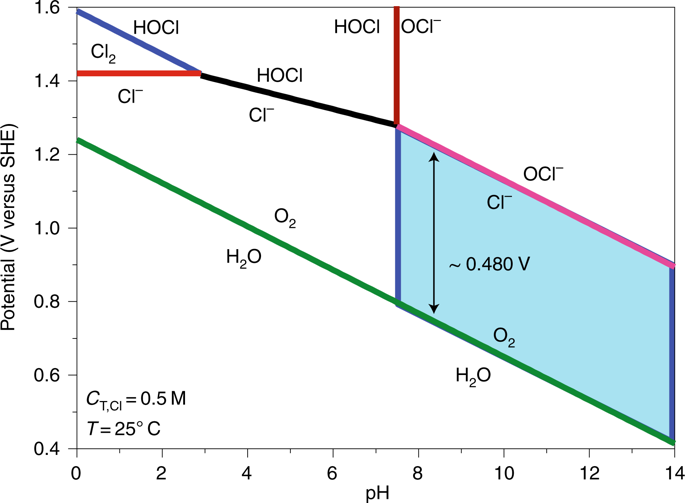Nature Energy ( IF 49.7 ) Pub Date : 2020-02-17 , DOI: 10.1038/s41560-020-0550-8 Wenming Tong , Mark Forster , Fabio Dionigi , Sören Dresp , Roghayeh Sadeghi Erami , Peter Strasser , Alexander J. Cowan , Pau Farràs

|
Powered by renewable energy sources such as solar, marine, geothermal and wind, generation of storable hydrogen fuel through water electrolysis provides a promising path towards energy sustainability. However, state-of-the-art electrolysis requires support from associated processes such as desalination of water sources, further purification of desalinated water, and transportation of water, which often contribute financial and energy costs. One strategy to avoid these operations is to develop electrolysers that are capable of operating with impure water feeds directly. Here we review recent developments in electrode materials/catalysts for water electrolysis using low-grade and saline water, a significantly more abundant resource worldwide compared to potable water. We address the associated challenges in design of electrolysers, and discuss future potential approaches that may yield highly active and selective materials for water electrolysis in the presence of common impurities such as metal ions, chloride and bio-organisms.
中文翻译:

电解低级和盐水表面水
由太阳能,海洋,地热和风能等可再生能源提供动力,通过水电解生产可储存的氢燃料为实现能源可持续性提供了一条有希望的途径。然而,最先进的电解需要相关过程的支持,例如水源的脱盐,淡化水的进一步纯化以及水的运输,这通常会造成财务和能源成本。避免这些操作的一种策略是开发能够直接使用不纯水进料运行的电解槽。在这里,我们回顾了使用低级盐水和盐水进行水电解的电极材料/催化剂的最新进展,与饮用水相比,低级盐水和盐水在世界范围内资源丰富得多。我们致力于解决电解槽设计中的相关挑战,











































 京公网安备 11010802027423号
京公网安备 11010802027423号